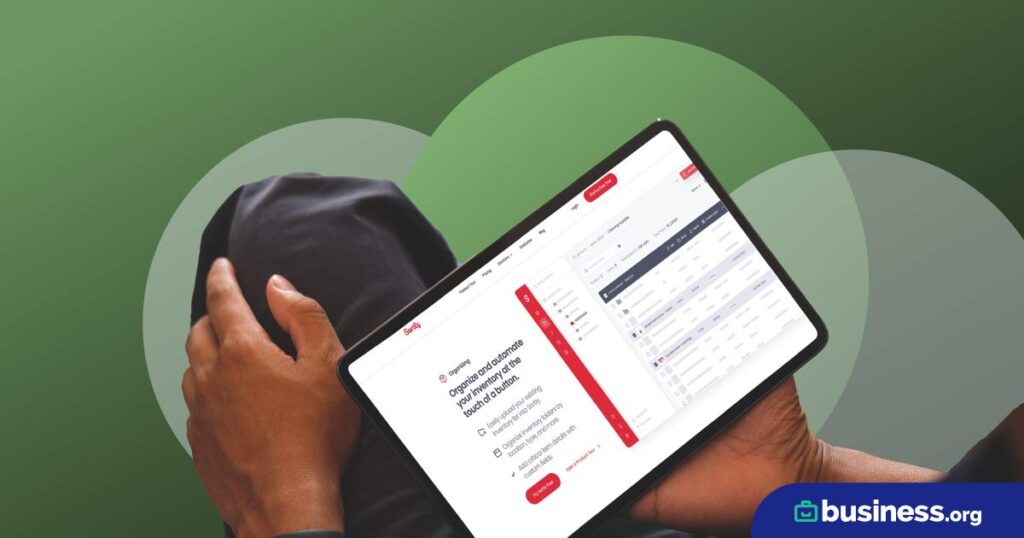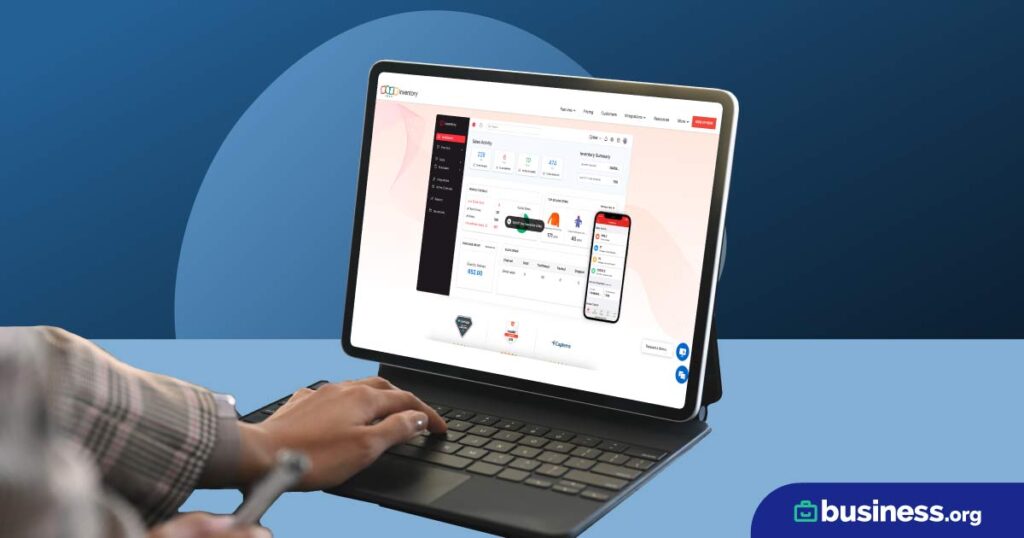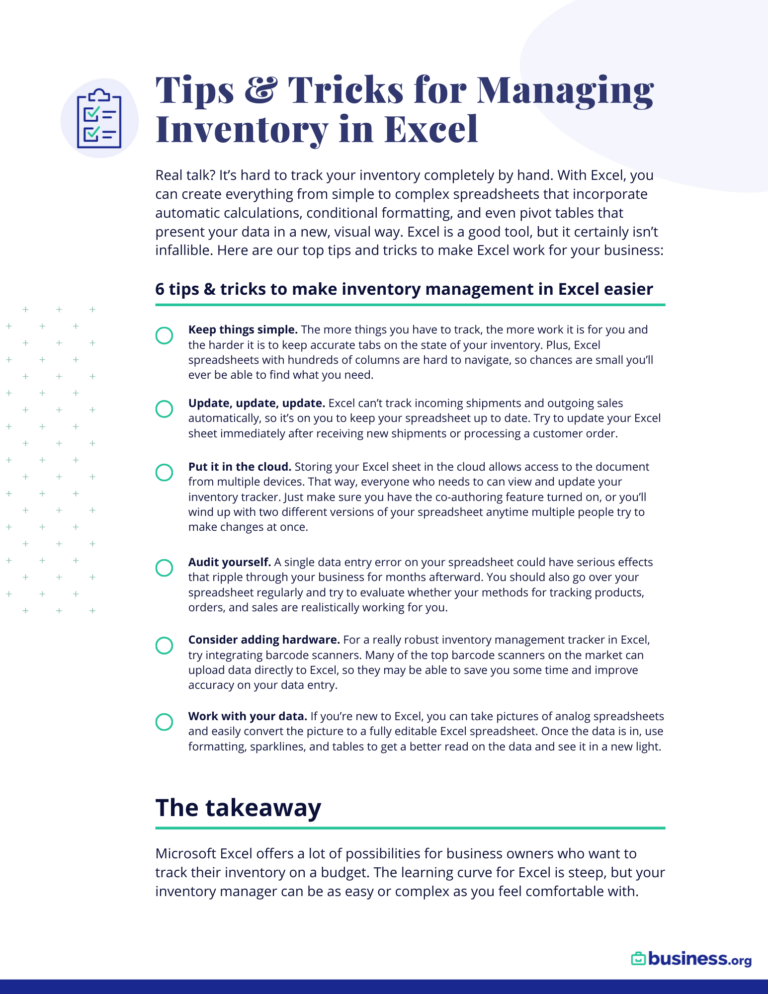We are committed to sharing unbiased reviews. Some of the links on our site are from our partners who compensate us. Read our editorial guidelines and advertising disclosure.
Push System vs. Pull System for Inventory Management in 2023
Generally speaking, most inventory management solutions fall into one of two types: push systems and pull systems.
Push systems are ideal for established businesses with deeper pockets and lots of inventory storage space.
On the other hand, pull systems are perfect for smaller entities with limited budgets that are still establishing themselves. Most businesses, however, use a hybrid approach called a push-pull system that features key elements from both strategies.
Let’s dig in to understand the best choice for your business.
Comparing push and pull inventory management systems
The difference between push and pull systems ultimately boils down to a question of risk. Do you preemptively order enough product to meet demand, saving on manufacturing costs and risking that product won’t sell? Or do you order only enough product to maintain the minimum acceptable inventory levels, saving on storage costs and risking that you won’t have enough product to meet demand?
Let’s analyze each system separately to unearth your business’s optimal choice.
Push vs. pull inventory management systems
If you find it difficult to choose between the two, take comfort knowing that most businesses use a hybrid approach called the push-pull system. This way, entities can save money while also rapidly fulfilling customer orders.
By signing up I agree to the Terms of Use and Privacy Policy.
Best for smaller budgets: Pull inventory management systems
Pull inventory management systems aim to keep a minimal amount of stock on hand. This works by ordering small amounts of inventory in response to customer demand, rather than forecasting and placing bulk orders in advance.
Having a lean and dynamic ordering plan helps you minimize the risk of unsold, wasted product. It also reduces the amount of inventory you have to store, which helps you save on warehousing costs.
Some considerations
The catch? For a pull inventory system to work, you’ve got to assess your inventory levels and reorder stock far more frequently than you would with a push system. If you don’t replenish your stock fast enough, you could easily run out of product, losing sales and ruining the customer experience as a result.
On the upside, though, a pull system can lower your overall expenses by eliminating waste and leaving you with more cash on hand to invest in other aspects of your business.
Pull system examples
Let’s imagine a car manufacturing plant that wants to minimize the number of windshields consuming precious storage space. The plant assembles 20 cars per week, and it takes two weeks for new windshields to arrive once the plant orders them from the manufacturer.
Based on these numbers, the plant orders 60 windshields up front, then 20 more per week thereafter. This is just enough to keep up with the plant’s anticipated assembly output.
But what if the plant scored a massive surge in orders? Instead of popping champagne, they’d be scrambling to secure more than a measly 20 windshields per week. If this frantic blitz fails, the plant must cancel orders and disappoint customers since the factory is unable to secure the necessary materials.
What types of businesses should use a pull inventory management system?
A pull inventory management system may be right for your business if any of the following apply:
- You don’t have a lot of storage space: A pull system minimizes warehousing since you order less product.
- You have minimal working capital: Upfront costs are low since you pay as you go.
- You’ve sold your product for less than a year: Having less historic data makes it difficult to predict future sales volume, making a pull system ideal.
- You have a small clientele: There’s less risk of running out of stock when using a pull system.
- You work with a local manufacturer: International shipping costs and cross-country transit times could prohibit a pull system’s time-sensitive nature.
- Your manufacturing fees are low: A pull system only works if your per-order costs are low since you’ll be placing many sequential orders.
Generally, we think most Main Street businesses can run a pull inventory system without any major mishaps.
What is the best inventory management software for the pull inventory strategy?
Pull inventory systems need to be able to handle advanced supply chain considerations and just-in-time (JIT) inventory needs. For that, we recommend Ordoro. We love this platform for its front-and-center focus on reducing product ordering lead time while speeding up your broader customer fulfillment process.
Best for established businesses: Push inventory management systems
In inventory, a push system is one where your business orders products, then does its best to sell the products it has (or “push” existing inventory on the consumer).
Push inventory management relies heavily on forecasting. Basically, your business predicts how many units of a product you’ll need for the next month, quarter, or year. You then order all the units you’ll need at once. Optimistically, you’ll always be well-stocked without needing to constantly reorder.
Most importantly, push systems reduce the cost of manufacturing your items by eliminating costly per-order fees. This grants a healthier profit margin when you sell those items—or you could pass those savings on to your customer, making your business more competitive.
Some considerations
Here’s the problem, though: you need hyper-accurate forecasting to make a push system work for your business. If you anticipate your product sales incorrectly, you could easily wind up ordering more than you sell. And if you can’t sell products, you lose money from making and storing that product.
Bulk ordering can also increase storage costs, since you’ll possess more inventory. Plus, you’ll have less free cash flow since you’re spending more up front. This could make it hard to invest in other business aspects, possibly creating the need for loans.
Push inventory management examples
Say an office supply company has sold 150 red folders per week for the past five years, with a 20% uptick in those numbers around the holidays. Based on these numbers, the company forecasts it will sell 2,130 red folders in Q4, so it opts to order 2,130 folders from its manufacturer in August.
If all goes according to plan, the entire lot of 2,130 folders will sell in Q4, making this strategy a success.
But what if sales went awry and only 1,000 folders sold in the final quarter? At best, this creates an opportunity cost since the folders hog up space that faster-selling items could have inhabited. At worst, the company suffers a financial loss if the folders never sell or are destroyed.
What types of businesses should use a push inventory management system?
In general, we recommend using a push inventory management system if your business meets the following criteria:
- You’ve been in operation for more than a year: Vast time-tested data is mandatory to draw reliable predictions.
- You’re profitable enough to take a hit: You’re bound to miss some forecasts, so you’ll need a cash cushion to help absorb consequential losses.
- You handle a high volume of sales: Leftover inventory is bound to move if you have enough sales volume.
- You deal with high manufacturing fees: Bulk ordering can limit high per-order expenses while possibly scoring you a bulk discount on product per-unit costs.
In our opinion, a pure push inventory system is probably best for larger small businesses that have a good handle on how inventory turns within their business. If you’re a small startup or a new Main Street business, you may want to go with a pull system or a hybrid push-pull system.
What is the best inventory management software for the push inventory strategy?
We recommend Fishbowl Inventory, Unleashed, or Cin7, as all three providers offer high-end demand planning that’s built in with your inventory management system.
Push-pull inventory management
Most businesses apply both the push and pull concepts of inventory management. Push-pull systems (or lean inventory management) aim to strike a balance between having enough product on hand to meet demand while also minimizing storage and production costs.
Push-pull systems often use the economic order quantity (EOQ) formula to determine how often to reorder inventory. This formula factors in storage costs, manufacturing costs, the number of items ordered at a time, and the frequency with which items are ordered, spitting out the total inventory cost based on the number of items you project you’ll need.
Indeed, this can be complicated. Using EOQ requires some advanced math skills—not to mention time. So if you’re thinking a push-pull system is right for you, we highly recommend you consider using an inventory management software that can run the numbers for you.
The takeaway
In general, we think push systems are better for large businesses that already have a healthy bottom line. It also helps to have a long history of sales data so you can accurately forecast customer demand.
Meanwhile, pull systems tend to work better for smaller businesses that can’t afford to order and store their inventory in bulk.
The other option is to invest in an inventory management software, which allows you to create a hybrid push-pull inventory system that’s tailored to your business needs.
Both push and pull systems can be tricky to run. Get an essential digital solution with our guide to the best inventory management software options on the market.
Related content
Disclaimer
At Business.org, our research is meant to offer general product and service recommendations. We don't guarantee that our suggestions will work best for each individual or business, so consider your unique needs when choosing products and services.








